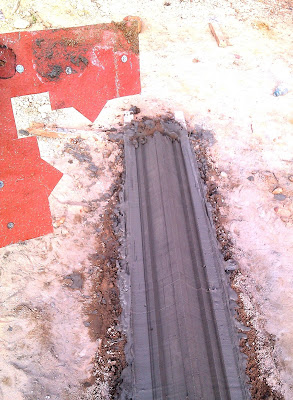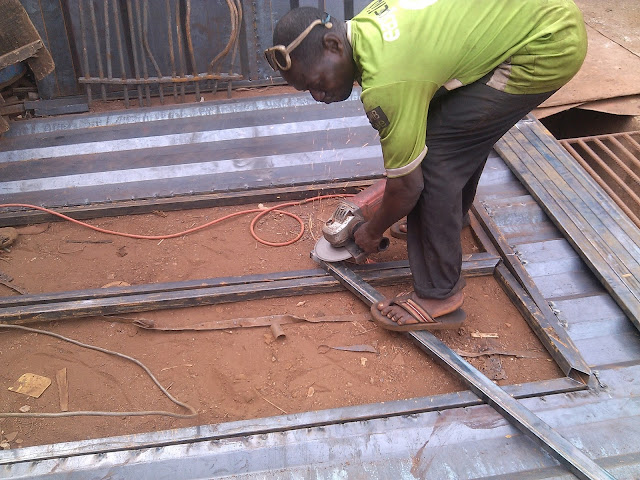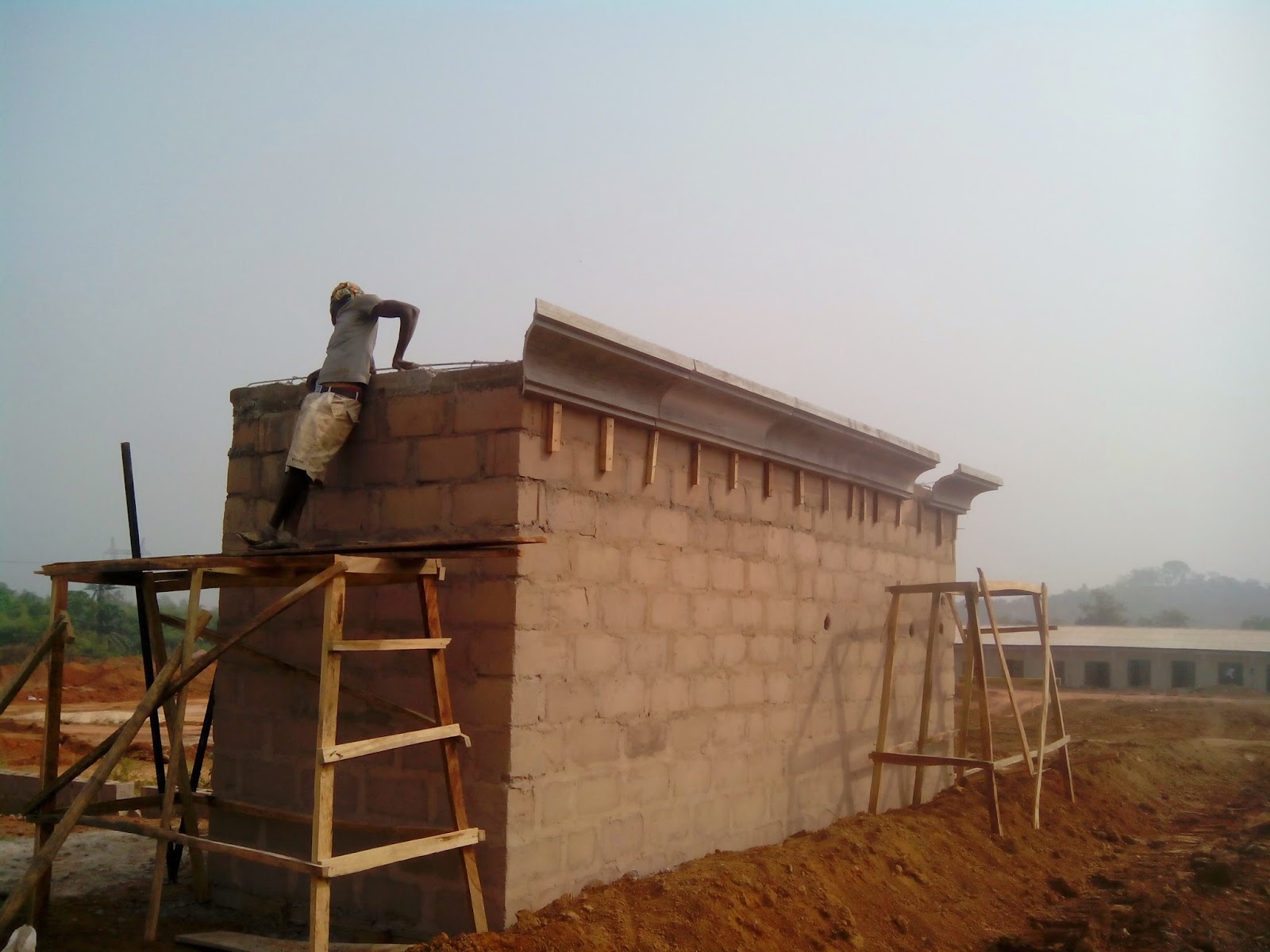posted By : kosi Emmanuel Chukwujindu
 |
| Architect: and Skirting Moulders |
There are many methods of producing decorative skirting used at the corners of columns, walls,Windows etc.
There is the traditional plaster-of-Paris skirting made from white P.O.P cement. This is used mostly for suspended ceilings and waist level skirtings within the interior of buildings. This type has the advantage of being lightweight and mouldable into almost any shape or design. The challenge however with this type is that it is not very resistant to water and thus it is seen to depreciate in aesthetics when exposed to prolonged dripings especially when used in exterior locations.
There is however an alternative method; THE USE OF ORDINARY PORTLAND CEMENT moulded to shape and finished with white (or any color) paint. Skirting made from portland cement are typically resistant to water and last longer than those made from P.O.P cement. It however tends to be limited in versatility of design, due to its heavier weight. it is usually used for window trims, wall edges and fence trims, and other exterior needs etc.
At the ENSIBUM market project, we decided to use skirting made from cement to add some mass to the already gigantic entrance gate. This post is dedicated to describe how we made these skirting in-situ and installed them.
STEP 1: MATERIALS REQUIRED; semi coarse sand, soft texture sand, water, cement, a custom mould.
STEP 2: PREPARE THE BASE : start by making a mound of about 4ft. length and about 6" high using the semi-coarse sand. this will serve as base for the skirting, as well as separates it from the ordinary earth after the cement has cured and hence makes it easy to lift and shift. Use two range devices to protect the boundary on both sides of the mound. Using concrete nails to support the ranges along the lenght, making sure the space between them is even all through. This will provide for a perfect edged skirting in the end.
STEP 3: MIX THE CEMENT: The skirting is made completely of cement mixed with water and a little fine texture sand.( when necessary). A bag of cement can be properly mixed with about 15 - 20lts. of clean water. it should be stirred properly in a bucket or bowl or any open container that will allow for ease of scooping while molding.
STEP 4: MOULDING :
Pour the cement paste gradually onto the sand mound. Use the hand held, locally carved mould to shape it into desired pattern (as shown here) and allow in same position for at least 12 hours before attempting to remove.
Pour the cement paste gradually onto the sand mound. Use the hand held, locally carved mould to shape it into desired pattern (as shown here) and allow in same position for at least 12 hours before attempting to remove.
Remember to make nail size openings along the skirting to allow for nailing during installation.
STEP 5: INSTALLATION:
By physical inspection, you can tell when the skirting is strong enough to be handled without breaking. You can then raise it neatly, and carry to point of fixing. The plumb device is used to mark straight positions along the wall. this is to ensure that the skirting is not slant at any point which will look bad to the viewer.
Nail the skirting onto the wall, siupported by wooden noggins and use cement to dress the edges neatly!
 |
| BEFORE CEMENT SKIRTING |
 |
| AFTER CEMENT SKIRTING |






